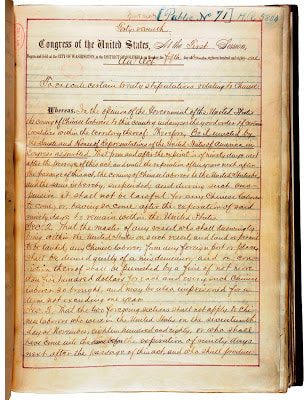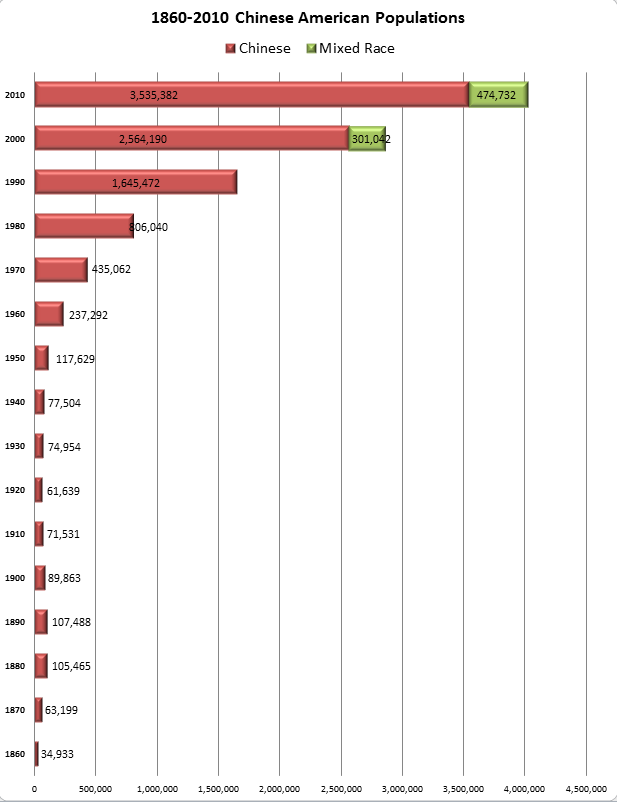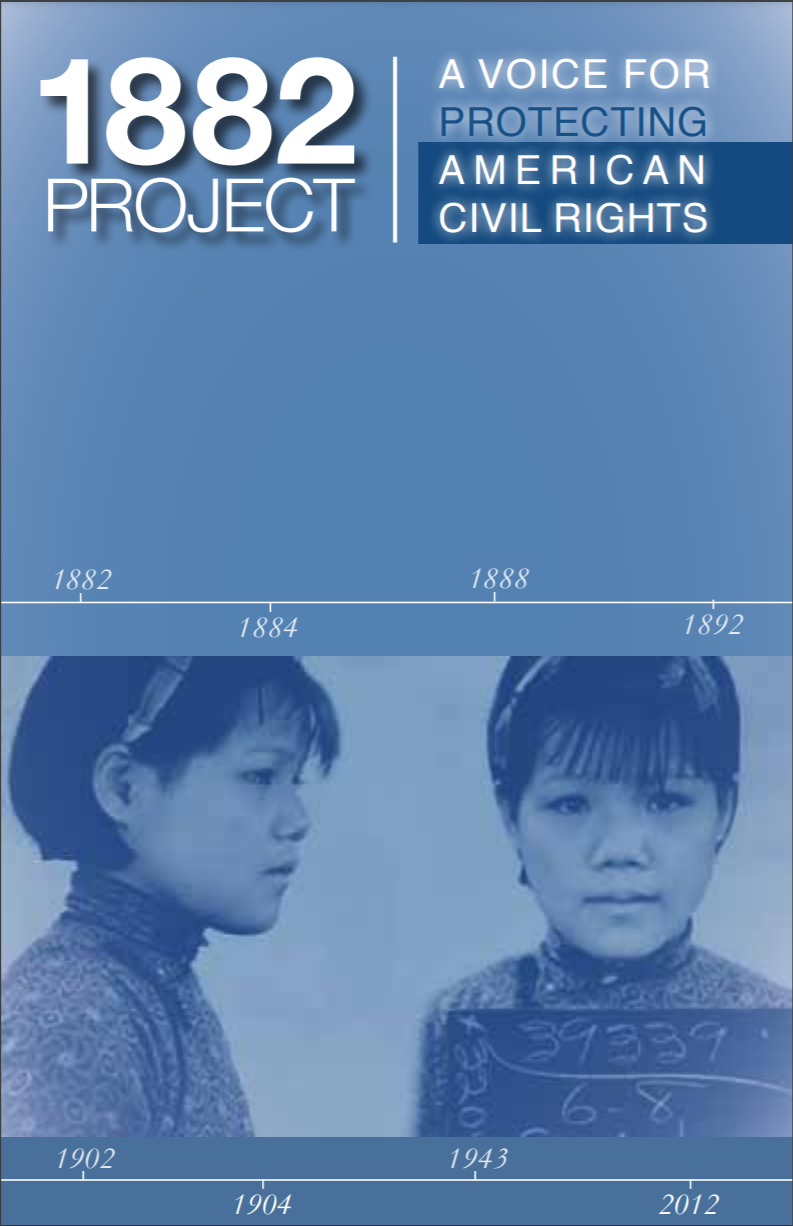Chinese Exclusion Act
|
The first recorded arrival of three Chinese sailors in the U.S. travelled from Canton (now Guangzhou), China on board the ship Pallas to Baltimore, Maryland in August 1785. There is still a neighborhood called Canton in Baltimore today. It was settled and named by the ship's captain.
By 1860, the census counted 34,933 Chinese living in California. More than three quarters of them were miners and laborers who first came to the U.S. during the 1848-1855 Gold Rush and then helped built and completed the First Transcontinental Railroad by 1869. Despite their contributions to the American society, these early Chinese arrivals encountered barriers due to their appearance and lifestyle. They were soon deemed incapable of assimilating into American culture and resented as threats to American labor. When economic conditions worsened and unemployment increased in the U.S. in the 1870s, prejudice against Chinese culminated into violence. Various legislations followed, leading to the passage of the Chinese Exclusion Act in 1882, which Iowa Congressman John Kasson described as "one of the most vulgar forms of barbarism." Initially set for a period of ten years, the Chinese Exclusions Act was extended for another ten years in 1892 and then became permanent law in 1902 after five additional Acts to extend and tighten the original law. The final Senate vote in 1902 was 76 yeas and one nay. The lone no vote was cast by Massaschusetts Senator George Frisbie Hoar. Extensions of the Chinese Exclusion Act further excluded Japanese, Koreans, and other Asians. Congress banned all Chinese from becoming U.S. citizens from 1882 to 1943, and stopped most Chinese from even entering the country beginning in 1882. These actions were legal because they were made into laws. They were democratically decided by both Democratic and Republican lawmakers. Barred from becoming voters, the Chinese had no political recourse against repeated discrimination. After the repeal of the Chinese Exclusion Act in 1943, the immigration quota for Chinese was set at 105 per year. It took another 20 years until the Immigration and Naturalization Act of 1965 allowed more equitable immigration quotas for Asians to move to the U.S. Led by Rep. Judy Chu, Chair of the Congressional Asian Pacific American Caucus, the House of Representatives unanimously passed a resolution expressing regret in 2012 for the passage of discriminatory laws against the Chinese in the U.S., including the Chinese Exclusion Act. Earlier in 2011, a similar resolution sponsored by Massachusetts Senator Scott Brown was unanimously agreed to by the Senate. Unfortunately, history about discriminatory exclusion of Chinese Americans and other Asian Americans may still be in writing at this time. |
Library of Congress
Chinese Exclusion Act |
The 1882 Project
|
2012/0727 Booklet: 1882 Project - A Voice for Protecting American Civil Rights
|
Special Thanks to Martin Gold for use of materials from his book: Forbidden Citizens: Chinese Exclusion and the U.S. Congress
|
|
Additional References
|
2018/05/29 PBS: The Chinese Exclusion Act - A Special Presentation of American Experience
Examine the origin, history and impact of the 1882 law that made it illegal for Chinese workers to come to America and for Chinese nationals already here ever to become U.S. citizens. The first in a long line of acts targeting the Chinese for exclusion, it remained in force for more than 60 years. Library of Congress: Primary Documents in American History - Chinese Exclusion Act 2021/05/05 SupChina: US-China Relations at the time of the Chinese Exclusion Act |


